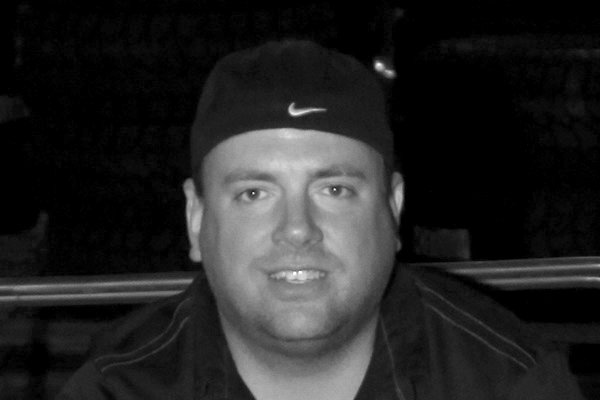
 Pete Trasborg
Brand Manager, Jp
Pete Trasborg
Brand Manager, Jp
When it came time to give our trusty ’91 Comanche a kick in the power department, we knew we didn’t want to do an engine swap. The 4.0L was lacking in power, but it fit the truck well: anvil-reliable, bolted to a decent transmission, and already in the truck. Let’s face it; an engine swap is a time-consuming and involved affair and we like driving this truck. We didn’t want it down for weeks on end while we tied up loose ends. In the past it always seems that something else pops up just when we thought the engine swap was complete. So, we were hot on the hunt for a supercharger or turbo kit that wouldn’t kill the reliability of the Jeep when we stumbled across Mopar’s 4.7L stroker kit and suddenly an engine swap sounded like a good idea.

The press release was what you’d expect about it being a bigger engine, having more power, and featuring Jeep reliability. While Mopar doesn’t give power ratings of the engine, we figure it will be good for about 235hp/265ft-lb. Of course, it talked about how there was a stroker engine to match any ’91-’06 Jeep (Wranglers, Cherokees, Grand Cherokees, and Comanches) that originally came with the inline-six. All things we were looking for.
 If you are going to do a swap like this in a weekend, you’ll want to have the proper tools on hand. An engine hoist is a needed and an engine stand is a plus. But, don’t forget the little things. Brake parts cleaner, thread-locker, and RTV are going to be needed in swapping parts over from the old engine to the new one. Do yourself a favor and pick them up before the swapping gets hot and heavy.
If you are going to do a swap like this in a weekend, you’ll want to have the proper tools on hand. An engine hoist is a needed and an engine stand is a plus. But, don’t forget the little things. Brake parts cleaner, thread-locker, and RTV are going to be needed in swapping parts over from the old engine to the new one. Do yourself a favor and pick them up before the swapping gets hot and heavy.
Frankly, we weren’t even considering a stroker in this Jeep. It seems everyone with a stroker has put more thought into installing their stroker engine than some parents give to having a kid. But when we dug deeper, we found that the only parts Mopar requires to be changed are the fuel injectors. We decided that if the literature was right, the engine would be easy to install and would work with our stock computer. And, if was really so easy, there should be no reason we couldn’t pull the swap off in a weekend. So, we pulled the trigger on the 4.7L Mopar stroker. Then we enlisted the help of a couple of friends to make sure we’d meet the deadline.
Putting an engine in over a weekend is all well and good, but what about all the stroker-related questions and problems? A 4.7L engine can’t be happy breathing through parts designed for a 4.0L, can it? Can the factory computer handle a stroker? Can it really be that easy to bump power by 45hp? Does the engine really install just like a factory engine? What about the crank spacer? What about oil pan clearance? Will the added power need more radiator to stay cool? Trust us, we asked all these questions too. That is why we’ve broken this down into a three part series. Part two will be ride and drive impressions as well as mileage numbers compared to our original engine and before and after dyno numbers. In Part three we’ll let the engine breath a little better and see what kind of power can be had without opening it up. In the meantime, follow along as we thrash to slam more power in our Jeep in less than 60 hours.
 An engine relies on many fluids to work. It needs fuel, oil, and coolant. The fuel is in your tank, but you’ve got to drain the radiator to swap engines, and you want to put new oil in the new engine for long life. We were concerned that our factory radiator wouldn’t be able to cool the extra horses so went with Be Cool coolant to give us that extra margin.
An engine relies on many fluids to work. It needs fuel, oil, and coolant. The fuel is in your tank, but you’ve got to drain the radiator to swap engines, and you want to put new oil in the new engine for long life. We were concerned that our factory radiator wouldn’t be able to cool the extra horses so went with Be Cool coolant to give us that extra margin.
Engine Specs/Features
Cylinder Head Features:
•Jeep 4.0L cylinder head
•1.91 intake valves / 1.50 exhaust valves
•62cc Combustion chamber
•155cc Intake runner
•Three-angle valve job
•Surfaced
•New valves, springs, guides, seats, retainers
•New pushrods
•New stamped steel rocker arms
•New head bolts
Rotating Assembly Features:
•New 3.906-inch stroke crankshaft
•OE 4.0L connecting rods with performance rod bolts
•Forged pistons- dished 21cc
•Performance main and rod bearings
•Performance camshaft bearings
•Moly piston rings
•New 3 piece performance timing chain set
•Performance camshaft 206/212-degrees [email protected] lift. 460/476-inch lift with 113-degree lobe separation angle
Block Features:
•Thermally cleaned and shot blasted to remove rust and scale
•Blocks are magnafluxed to check for cracks
•Lifter bores are checked for size & fit prior to roller burnishing
•Cylinders are bored and honed to exact specifications
•Torque plate honed
•Block is line honed to factory OEM specifications
•Blocks are internally pressure checked in a heated dip tank
•Block deck surface is checked for straightness and resurfaced
•Connecting rods are inspected and reconditioned
•New brass freeze plugs, oil seals, and galley plugs
•Stroker clearanced
•High volume oil pump and pickup
 Unless you are a bit of a masochist and like swapping water pumps, it is a good idea whenever you swap engines to put a new water pump and thermostat on the new engine. It is cheap insurance for long-term reliable service. We went with a high-flow water pump from 4WD Hardware and a high-flow 195-degree thermostat that we sourced from Summit Racing. Be careful when you order your parts. Double-check them closely when they show up. There is only one number separating a Cherokee/Comanche pump and a TJ pump. Any wrong parts can quickly trip up a tight weekend swap schedule like this.
Unless you are a bit of a masochist and like swapping water pumps, it is a good idea whenever you swap engines to put a new water pump and thermostat on the new engine. It is cheap insurance for long-term reliable service. We went with a high-flow water pump from 4WD Hardware and a high-flow 195-degree thermostat that we sourced from Summit Racing. Be careful when you order your parts. Double-check them closely when they show up. There is only one number separating a Cherokee/Comanche pump and a TJ pump. Any wrong parts can quickly trip up a tight weekend swap schedule like this.
Break-in
So you’ve got your new engine installed and are anxious to go out and cut some roosts. Not so fast there, junior. Installing the engine is only half the work. You have some more work ahead of you. After you’ve got it in, and pre-oiled, and all fluids good to go it is time to break that thing in. Follow these steps for engine longevity.
•On first start up, take the engine to 2,000 rpm. Then continuously vary the revolutions from 1,500 to 2,500 rpm. Do this for 20 minutes. The Jeep will likely run hot during this time. As long as it stays out of the red on the gauge it is fine. You do this to seat the flat tappet lifters to the cam. The high rpm is needed to get enough oil up to the cam. You want to vary the rpms to get the lifters spinning in the bores so they don’t flat-spot at the cam.
•After 20 minutes, shut the Jeep down, check for leaks, and change the oil.
•Drive the Jeep for about 30 minutes with varying speeds and loads. Don’t go past half throttle, don’t use high rpms
•Do six medium-throttle accelerations to about 3,500 rpm letting off the gas and coasting down to 20 mph while in gear. This is to seat the piston rings in their bores. Let the engine cool completely.
•Do a few full-throttle accelerations to about 3,500 rpm. Then let off the gas and coast back down to 20 mph. This is also for ring seating.
•Change oil and filter.
•Drive for 500 miles with little high-rpm usage and keep the load on the engine low.
•Change oil and filter.
•Enjoy normal usage of your new stroker.







